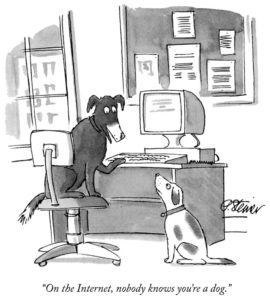When I look on Twitter here’s how I see physician authority and influence:
- Authority – These are the true leaders in medicine with deep knowledge, experience and credibility in their domain. These are the leaders among physicians. The power hitters. And not necessarily academics.
- Influence – Those with lots of followers or influence as determined by social media metrics.
Some influencers have authority. Others are poseurs who dress-up influence as authority. Many are somewhere in between. Physicians among the public are categorically considered to have authority although this is relative. Physicians with authority among other physicians is less common.
Conflation of physician authority and influence
The problem is that the consuming world conflates physician authority and influence. But popularity has no correlation with credibility or competence. Digital health is lousy with empty minded, parroting self-promoters who have thousands of fawning followers. What they know is limited by what they read on Twitter 10 minutes earlier.

Speaking of dogs, let me eat the dog food: I’m more influence than authority. I own it. I know the difference. Most importantly, I work hard to not mistake the two in my reflections on the world.
I’m a unicorn in that my dialog in the public sphere has no connection to my job. I rarely discuss digestive health in children, my area of expertise. But the more I read, think, interview, write, record and refine my ideas on technology, doctors, and change I like to believe that my credibility improves.
Contrasting physician authority and influence is a 21st century issue
This spectrum of physician authority and influence is a new thing. Before every doctor was a publisher, the medical industrial machine did the heavy lifting. If you were out there with important peer-reviewed papers and had run the gauntlet of academic promotion, chances are you had authority that gave you the permission to speak and share. Like journals, prepublication selection once defined who or what was worth listening to.
The concept of permission (to speak or publish an opinion) in medicine was a defining feature of first few hundred years of our profession. Ideas are increasingly selected after their release into the wild.
Thought leaders of old
Thought leaders were once vetted as people who truly lead thinking. Pharma (and there’s not one of you will want to hear this so put on your big boy pants, grab a seat, put your head between your legs and breath deeply into a brown paper bag) was once reasonably good at identifying and coopting credible physicians. Their business and their brands depended upon it.
Understanding physician thought leadership in this new world has created real challenges both for industry and the consuming public.
I suspect the early network theorists were wrong. The crowd isn’t always smart when they choose who’s worth listening to. Influence and attention is not a surrogate marker for credibility.
I’ll continue to work this through. Where am I wrong?
If you like this you might like the 33 charts Digital Influence Archives. All of posts that deal with the concept of online influence, especially as it relates to physicians.